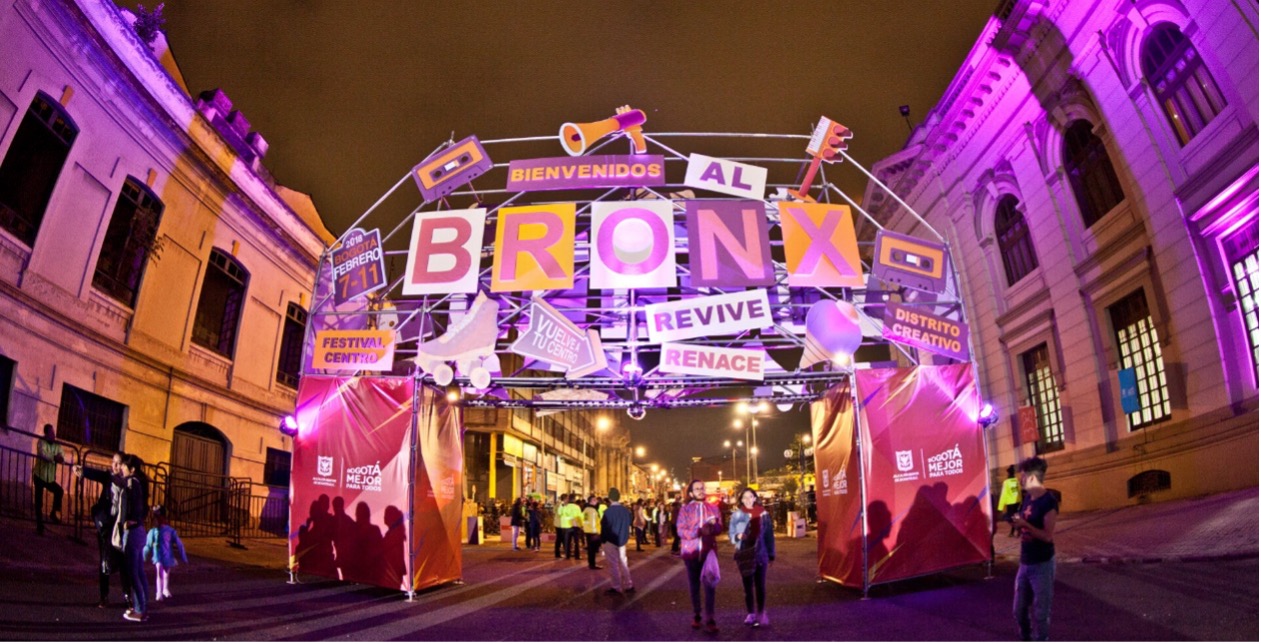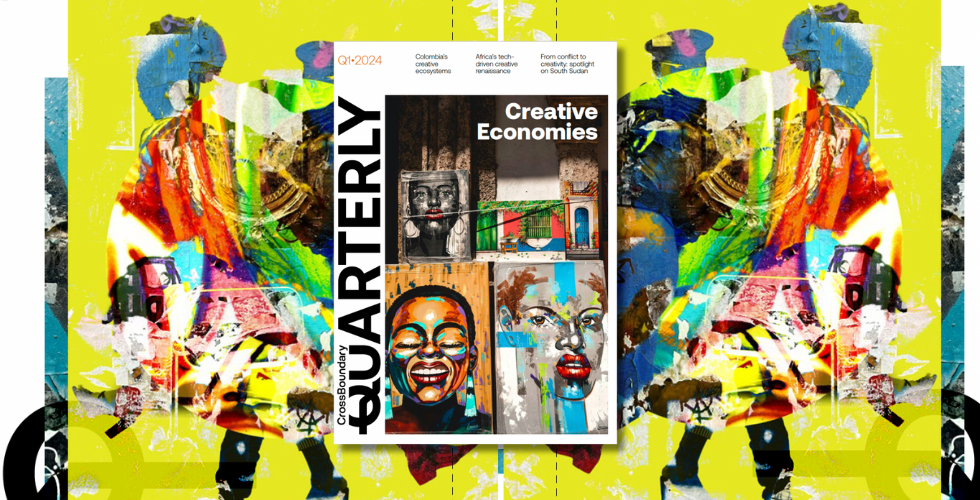
Creative industry ecosystems in Colombia: how collaborative efforts foster economic and social prosperity
Human creative expressions have always been a thermometer, a testimony, an indicator of society’s evolution. From cave paintings in prehistoric times to today’s street and digital art, humans have always found a way to expand the ways we communicate, embracing new tools to express ourselves interact with our environment.
Human creative expressions have always been a thermometer, a testimony, an indicator of society’s evolution. From cave paintings in prehistoric times to today’s street and digital art, humans have always found a way to expand the ways we communicate, embracing new tools to express ourselves interact with our environment.
These behaviors may only seem important to us as individuals: each one of us has our own creative likes and dislikes, our own traditions, and our own artistic preferences and talents. However, market interactions are inextricably embedded in humanity’s need to express and create, giving rise to entire industries (e.g., music and film) that form a strong economic sector.
In fact, the arts sector currently employs more than 30M people globally and is valued at more than US$4.3T annually, which adds up to a 6.1% share of the global GDP. This is twice the size of the Canadian economy (US$2.2T) and is comparable to the entire German (US$4.1T) or Japanese (US$4.3T) economies. In other words, our artistic expressions, however fluid they may seem, have become indispensable to generating social development and economic growth.
But, what makes up the creative economy?
Trying to define this sector can lead us to the eternal dilemma of defining what is art and what is not. Many have tried to address this great philosophical, theoretical, and artistic question, only to leave us with a range of perspectives (all of which are valid). However, for the past few decades, the creative sector has been conventionally defined as the set of creative, cultural, and innovative activities that are able to generate direct or indirect economic value. The task of deciding what falls into each of these three categories and what does not, is left to each of us and to each society.
Even so, in recent decades, “creative industry ecosystems” have emerged worldwide and have demonstrated a significant capacity to transform spaces in cities and territories—even in the most challenging and vulnerable locations. These ecosystems are a model for multi-stakeholder collaboration where creative expressions are at the center. Civil society, public institutions, and private players intertwine to foster one or more creative economies with the ultimate objective of renovating and bringing a new social narrative to certain geographic spaces.

Usiacuri
At CrossBoundary we know how powerful this type of collaboration can be when generating lasting change particularly in underserved markets. We specialize in developing innovative mechanisms to foster collaboration and uncover the deep potential of investment opportunities that would otherwise be overlooked, and the creative economy is a ripe market for this. This is why the results of creative economy ecosystems that have flourished worldwide are incredible success stories to us: districts such as Wynwood in Miami, Matadero in Madrid, Peckham Levels in London, LX Factory in Lisbon, and Comuna 13 in Medellín are some well-known examples of these ecosystems, some of which we have studied deeply.
However, in this article, we would like to showcase two lesser-known but powerful examples from Colombia that demonstrate tight multi-stakeholder collaboration and achieve strong social and economic results through authentic creative expressions.
The first of these ecosystems is Usiacurí, a small municipality located less than an hour from the Caribbean Sea and historically known for its architecture, artisanal craftsmanship, and cultural tradition spanning over 170 years. Driven by a narrative around color, the community of Usiacurí, in collaboration with government agencies and with the sponsorship of private actors—which included the mobilization of US$500K—created the largest mural in Colombia.
This endeavor helped position a small artisanal town as a center for tourism and international production. The successful collaboration has transformed a town that received 400 visitors per month into a tourist destination receiving 24,000 visitors in just 3 years. The economic development that has been triggered after these creative interventions has been material for the local population.


Bogota
The second case is the large-scale creative ecosystem that has been consolidated in Bogotá, the capital of Colombia. With a population of 11,508,000 inhabitants and located in the Andes Mountain range, this city boasts remarkable multicultural richness.
Taking advantage of its diverse population and culture, it has effectively developed 15 urban districts where creativity is nurtured and safeguarded. Nine of these districts are called “spontaneous” because they have been community-generated attempts to revitalize their neighborhoods through creative interventions such as muralism, graffiti, music, and gastronomy. The strong social narrative behind these transformations ends up developing cultural platforms with a high diversity of creative products and services. Districts such as San Felipe and Chapinero are a perfect example of this, as they are districts where a recovery of urban spaces and a proliferation of artistic, gastronomic, and cultural expressions have taken place. These two districts alone, are home to more than 30 independent galleries, over 20 restaurants, and a number of large-scale street art interventions. This in turn has attracted new local and international audiences to a renewed space within the city.
Given the success of the spontaneous creative districts and the thriving of different markets throughout the city, the local government opted to institutionalize this dynamic of renovation and promotion. Since 2015, over US$30M of public resources have been continuously committed to inducing these environments where creativity is gestated based on a social identity.
The best example of this is the restoration of the Bronx as a new Creative District. The Bronx was a territory in the center of the city where three criminal gangs involved in drug trafficking, extortion, torture, and abuse used to operate. This urban area was then transformed into one of the most important cultural environments in the city: today, the Bronx Creative District holds numerous music festivals, artistic gatherings, and is still investing to become the arts powerhouse of the city.


In short, these are spaces where Bogotá’s civil society, public, and private actors have come together to create, explore, and live within the creative economy, generating new consumption dynamics and a constant flow of visitors. These creative economy ecosystems have mobilized more than US$50M (from public and private sources) in the last 10 years, leading the creative economy as a whole to contribute approximately 6% of Bogotá’s GDP in 2023.[1]
Moreover, creative interventions have benefitted the city beyond economics, improving the safety and quality of life for all citizens. To illustrate, the Security Secretariat of Bogotá has reported safety improvements in 11 under-bridge zones where the “Museo Abierto de Bogotá” district has intervened, achieving a 41% reduction in reported robberies, homicides, and sex crimes.
Creative industry ecosystems showcase the transformative power of collaborative efforts in fostering economic and social prosperity. From Usiacurí’s colorful project to Bogotá’s restoration of degraded urban areas, these initiatives have not only embellished cities’ landscapes but have also driven economic growth. As we witness the impacts of artistic ventures, it becomes clear that supporting creative economies is not merely a cultural pursuit but a valuable strategy for driving sustainable development. Through continued support and investment, these ecosystems serve as beacons of hope, demonstrating the possibilities that arise when communities, policymakers, and enterprises unite to unleash creative potential.
CrossBoundary Advisory is committed to unlocking the untapped potential of Latin America and the Caribbean through our expertise and strategic partnerships. Since 2015, we have been working on innovative collaborations between capital seekers, capital providers, and the donor community to drive economic growth while having a positive and sustainable impact on the environment. With our extensive market knowledge and robust local network, we have developed unparalleled access to high-impact and high-return opportunities that are often overlooked. If you are interested in learning more, please feel free to reach out to Laura Garcia.
Pigmento Crew is a non-profit organization from Bogotá, working to facilitate creative economy ecosystems in the most vulnerable territories in the country. Pigmento has collaborated with more than 5 local communities and has been a grant awardee of a number of public institutions to develop creative projects across Colombia. Reach out to Pedro Alejandro Cárdenas to know more about the work they are doing in Colombia and how they plan to expand it to Los Angeles, California.
[1] Own calculations. Data from DANE, Bogotá’s GDP (supply side) accounts.



